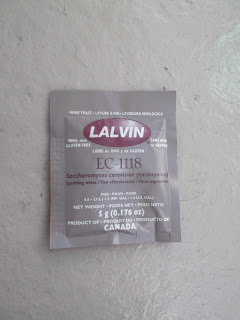Even in this modern age, moths continue to have an appetite for wool. Many personas within the SCA wear wool garments. This got me thinking about the kind of sachets that would be appreciated as largess, aside from just smelling good. Many of the combinations I have found during my web searches sound like they would smell very nice as well as being irritating to moths.
Lavender, mint, cedar, cloves, thyme, ginseng and rosemary
http://frugalliving.about.com/od/doityourself/tp/Get_Rid_of_Moths.htm
"...wormwood and rosemary were laid away with clothes as moth repellent..."
Sweet Herbs and Sundry Flowers: Medieval Gardens and the Gardens of the Cloisters
Nice recipe (http://www.sunlandherbs.com/recipes/herbal-moth-repellent/)
A pleasantly aromatic mixture of rosemary (Rosmarinus officinalis), garden sage (Salvia officinalis), and mint (Mentha spp.) leaves said to be proven effective at repelling clothes moths from drawers and closets. This recipe adapted from one appearing in Herbs About the House by Philippa Back (London: Darton, Longman & Todd, 1977; ISBN 0-232-51389-9). An electric blender works well for reducing the dried herbs and lemon peel to a powder.
INGREDIENTS
Lavender, mint, cedar, cloves, thyme, ginseng and rosemary
http://frugalliving.about.com/od/doityourself/tp/Get_Rid_of_Moths.htm
"...wormwood and rosemary were laid away with clothes as moth repellent..."
Sweet Herbs and Sundry Flowers: Medieval Gardens and the Gardens of the Cloisters
Nice recipe (http://www.sunlandherbs.com/recipes/herbal-moth-repellent/)
A pleasantly aromatic mixture of rosemary (Rosmarinus officinalis), garden sage (Salvia officinalis), and mint (Mentha spp.) leaves said to be proven effective at repelling clothes moths from drawers and closets. This recipe adapted from one appearing in Herbs About the House by Philippa Back (London: Darton, Longman & Todd, 1977; ISBN 0-232-51389-9). An electric blender works well for reducing the dried herbs and lemon peel to a powder.
INGREDIENTS
- 1/2 cup dried rosemary leaves
- 1/2 cup dried leaves of common garden sage
- 1/2 cup dried peppermint or spearmint leaves
- 1/8 cup dried lemon or orange peel, crushed into powder (powdered lemon peel is often available in the bulk herb section of many health food stores)
- pinch powdered cinnamon
- 2 drops each natural essential oil of rosemary, sage, and peppermint (optional)
- fine-weave muslin, made into small bags (readymade muslin bags are often available in the bulk herb section of many health food stores)
- Using a mortar and pestle or an electric blender, reduce the dried herb leaves to a rough powder.
- In a stainless steel or ceramic bowl, mix the powdered herbs with the powdered citrus peel and the cinnamon. Add the essential oils (if using) and mix thoroughly with a wooden spoon. (The aroma will be very strong.)
- Place the herb mixture into small muslin bags. Lay the bags in drawers, or hang them in closets. The mixture’s scent will fade with time; when it does, it can be refreshed with the addition of several drops more essential oils.









